Tulsa, Oklahoma, Hgh State Clinic, Hgh Injections, Hrt Doctors
Tulsa, Oklahoma Blood Testing Facilities
 Represents a LabCorp blood testing facility
Represents a LabCorp blood testing facility Represents a Quest Diagnostics blood testing facility
Represents a Quest Diagnostics blood testing facility
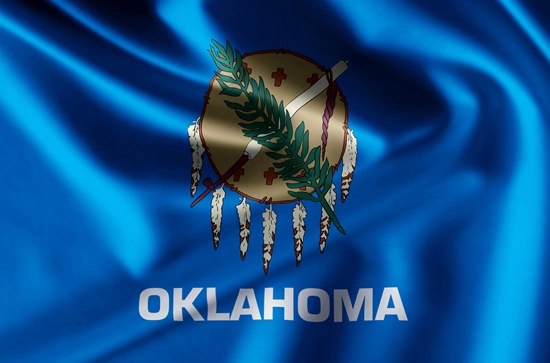
Nearby Labcorp Blood Testing facilities:
- Labcorp Center Distance: 1 m, 533 N Gilcrease Museum Road, Tulsa, Tulsa County, OK, 74127
- Labcorp Center Distance: 3 m, 3336 E 32Nd Street Ste 104, Tulsa, Tulsa County, OK, 74135
- Labcorp Center Distance: 7 m, 6717 S. Yale 104, Tulsa, Tulsa County, OK, 74136
- Labcorp Center Distance: 12 m, 864 S Aspen Ave, Broken Arrow, Tulsa County, OK, 74012
- Labcorp Center Distance: 42 m, 3310 W Okmulgee Ste A, Muskogee, Muskogee County, OK, 74401
- Labcorp Center Distance: 80 m, 451 S Holly St, Siloam Springs, Benton County, AR, 72761
- Labcorp Center Distance: 91 m, 1201 S Douglas Blvd Ste A, Midwest City, Oklahoma County, OK, 73112
- Labcorp Center Distance: 96 m, 3705 W Memorial Rd Ste 1406, Oklahoma City, Oklahoma County, OK, 73134
- Labcorp Center Distance: 97 m, 1111 N Lee Ste 235, Oklahoma City, Oklahoma County, OK, 73103
- Labcorp Center Distance: 99 m, 5401 N Portland 110, Oklahoma City, Oklahoma County, OK, 73112
Nearby Quest Blood Testing facilities:
- Quest Center Distance: 1 m, 1145 S Utica Ave, Tulsa, Tulsa County, OK, 74104-4000
- Quest Center Distance: 7 m, 6711 S Yale Ave, Tulsa, Tulsa County, OK, 74136-3317
- Quest Center Distance: 9 m, 607 E Main St, Jenks, Tulsa County, OK, 74037-4138
- Quest Center Distance: 10 m, 8803 S 101St East Ave, Tulsa, Tulsa County, OK, 74133-5726
- Quest Center Distance: 13 m, 10502 N 110Th East Ave, Owasso, Tulsa County, OK, 74055-6627
- Quest Center Distance: 42 m, 4318 W Okmulgee St, Muskogee, Muskogee County, OK, 74401-4648
- Quest Center Distance: 60 m, 819 S Pine St, Stillwater, Payne County, OK, 74074-4350
- Quest Center Distance: 71 m, 400 Fairview Ave, Ponca City, Kay County, OK, 74601-1910
- Quest Center Distance: 74 m, 601 E 13Th St, Grove, Delaware County, OK, 74344-2962
- Quest Center Distance: 75 m, 3700 N Kickapoo Ave, Shawnee, Pottawatomie County, OK, 74804-1707
- Quest Center Distance: 79 m, 310 2Nd Avenue Sw, Miami, Ottawa County, OK, 74354-6702
- Quest Center Distance: 85 m, 1500 N Strong Blvd, Mcalester, Pittsburg County, OK, 74501-3842
- Quest Center Distance: 87 m, 4833 Integris Parkway, Edmond, Oklahoma County, OK, 73034-8864
- Quest Center Distance: 90 m, 3824 S Boulevard St, Edmond, Oklahoma County, OK, 73013-5478
- Quest Center Distance: 91 m, 9060 Harmony Drive, Midwest City, Oklahoma County, OK, 73130-6253
- Quest Center Distance: 94 m, 9600 North Broadway Extension, Oklahoma City, Oklahoma County, OK, 73114-7408
- Quest Center Distance: 97 m, 13901 Mcauley Blvd, Oklahoma City, Oklahoma County, OK, 73134-8700
- Quest Center Distance: 98 m, 3366 Nw Expressway, Oklahoma City, Oklahoma County, OK, 73112-4444
- Quest Center Distance: 99 m, 4221 South Western Avenue, Oklahoma City, Oklahoma County, OK, 73109-3447
Tulsa Hormone Replacement Therapy Services
The Conscious Evolution Institute is Tulsa, Oklahoma's top source for quality HRT Therapy Programs and Services. Our clinic serves the entire Tulsa area, including Catoosa, Oakhurst, Broken Arrow, and Owasso, as well as the entire state of Oklahoma. We are a Licensed and Board Certified Hormone Therapy Clinic, and we have physicians associated with our clinic located in every corner of the state of Oklahoma.
If you feel that Hormone Deficiency may be negatively impacting your quality of life, or would just like to have a thorough check of your Hormone Balance, we strongly encourage you to contact our clinic using the information on this page. If you are looking for a reputable, quality Hormone Clinic in Tulsa, Oklahoma, we can provide you with the quality HRT Services that you've been looking for.
Tulsa Testosterone Optimation and Restoration Treatments
One of the most popular Tulsa HRT Programs that we offer is Testosterone Replacement Therapy. Testosterone is the most important male hormone, and completely regulates masculinity, as well as various other aspects of male health and wellness. Testosterone Deficiency becomes more common the older that we get, and millions of men suffer from Low-T in the United States, as well as tens of thousands in the state of Oklahoma.
If you have been experiencing sexual issues such as Erectile Dysfunction and Low Libido, in combination with other symptoms such as loss of strength, unexplained weight gain, anxiety, depression, or memory issues, there is a significant chance that you are suffering from Low-T and that you can benefit from the Testosterone Treatments that we offer to Tulsa Residents. Call us if you are interested in Testosterone Injection Therapy, Testosterone Creams, or Testosterone Patches in Tulsa or anywhere in the state of Oklahoma.
Tulsa Human Growth Hormone Replacement Injections for Age-Related HGH Deficiency
Human Growth Deficiency is a serious medical disorder that affects both men and women with age. HGH Levels are at their highest during puberty, and remain high enough to maintain peak condition during early adulthood, only to taper off around the age of thirty and continue for a lifetime. Usually, symptoms start to appear during the forties at the earliest, unless other issues such as obesity or sedentary lifestyle lead the symptoms to onset earlier than normal.
The Conscious Evolution Institute offers HGH Injections for Tulsa, Oklahoma and the surrounding area, and if our tests show that you qualify for Oklahoma HGH Therapy, we can offer you quality Online Growth Hormone Prescriptions from a trusted Hormone Clinic. Symptoms of Growth Hormone Deficiency include fatigue, lack of energy, changes in body composition, increased sickness, reduced resilience to injury and physical damage, depression, and cognitive decline. HGH Injections can help men and women in Tulsa feel and look better than they have in years.
Tulsa Sermorelin Therapy Recombinant HGH Alternative
In addition to the fine Growth Hormone Treatments that we offer in the state of Oklahoma, we also offer an alternative HGH Restoration Treatment known as Sermorelin Acetate. Sermorelin works by stimulating the body to produce its own HGH, which has some distinct advantages over Growth Hormone Injections for many patients. Sermorelin promotes a healthier hormone balance, because it allows the body to produce exactly how much HGH that it needs, exactly when it needs it. On top of that, Sermorelin is less expensive than Human Growth Hormone, and is available for prescription off-label, making it an awesome option for certain patients that may not qualify for Growth Hormone Therapy, but can still benefit from HGH Optimization. Our clinic can provide Tulsa residents with quality Sermorelin Therapy for the best prices available in Oklahoma.
Tulsa Weight Loss with HCG Injection Therapy
Along with Hormone Optimization, we also offer treatments designed to facilitate positive change, including weight loss and dieting. HCG stimulates the body to burn fat better, and also preserve muscle mass during weight loss. With HCG, men and women across the country have lost up to 30 pounds in a month, and were able to completely change their body composition in a matter of weeks or months. If you live in the Tulsa area, and are looking to lose weight fast with the help of qualified medical professionals, the Conscious Evolution Institute can offer our weight loss services to Oklahoma.
Tulsa, Oklahoma Information
Tulsa is the second most populous city in the state of Oklahoma, aside from Oklahoma City. Tulsa is located in a county by the same name, and is referenced by many names, including T-Town, Tulsey Town, and the Oil Capital of the World. Tulsa is located in the northeastern portion of Oklahoma, to the northwest of Oklahoma City. Tulsa is primarily driven by energy manufacture and distribution, as a result of the tremendous amount of oil and other natural energy resources located in the region.
Aside from oil and energy, the Tulsa economy also has other major sectors, including manufacturing, technology, telecommunications, finance, and aerospace. The largest suburb of Tulsa is Broken Arrow, but other suburbs include Coweta, Claremore, Bristow, and Skiatook. Companies located in the Tulsa area include Excel Energy, Samson, ONEOK, Syntroleum, and BOK Financial Corporation.
Perhaps because of the vast amount of natural wealth in Tulsa, Tulsa has grown to enjoy a rich cultural atmosphere, with many things to see and do. Landmarks in Tulsa include the statue, Appeal to the Great Spirit, the Sherwin Miller Museum of Jewish Art, and the Philbrook Museum. Musical and artistic attractions include the American Theater Company, Light Opera Oklahoma, and the Tulsa Symphony Orchestra. One of the most popular attractions in Tulsa is the Tulsa Zoo. There are a number of annual festivals in Tulsa, such as the Dia de Los Muertos Festival, Greek Festival, Scotsfest, and the Intertribal Indian Club Powwow of Champions.
Tulsa does have a small presence in professional sports, as it is the home of the Tulsa Shock of the WNBA. Aside from the Shock, the city is also home to the University of Tulsa and Oral Roberts University, both of which field college sports teams in Division One.
All About Tulsa, Oklahoma Geographic Area
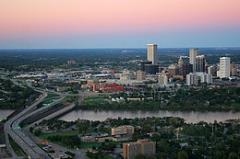
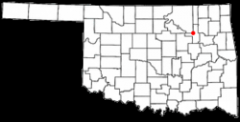
Tulsa ( /ËntÊulsÉo/) is the second-largest city in the state of Oklahoma and 45th-largest city in the United States. With a population of 391,906 as of the 2010 census, it is the principal municipality of the Tulsa Metropolitan Area, a region with 946,962 (2011) residents in the MSA and 998,438 (2011) in the CSA. Tulsa's CSA is projected to reach one million in late 2012. The city serves as the county seat of Tulsa County, the most densely populated county in Oklahoma, and extends into Osage, Rogers, and Wagoner counties.
/ËntÊulsÉo/) is the second-largest city in the state of Oklahoma and 45th-largest city in the United States. With a population of 391,906 as of the 2010 census, it is the principal municipality of the Tulsa Metropolitan Area, a region with 946,962 (2011) residents in the MSA and 998,438 (2011) in the CSA. Tulsa's CSA is projected to reach one million in late 2012. The city serves as the county seat of Tulsa County, the most densely populated county in Oklahoma, and extends into Osage, Rogers, and Wagoner counties.
Tulsa was first settled between 1828 and 1836 by the Lochapoka Band of Creek Native American tribe. In 1921, it was the site of the infamous Tulsa Race Riot, one of the largest and most destructive acts of racial violence in the history of the United States. For most of the 20th century, the city held the nickname "Oil Capital of the World" and played a major role as one of the most important hubs for the American oil industry. Tulsa, along with several other cities, claims to be the birthplace of U.S. Route 66 and is also known for its Western Swing music.
Once heavily dependent on the oil industry, economic downturn and subsequent diversification efforts created an economic base in the energy, finance, aviation, telecommunications and technology sectors. The Tulsa Port of Catoosa, at the head of the McClellan-Kerr Arkansas River Navigation System, is the most inland river port in the U.S. with access to international waterways. Two institutions of higher education within the city have sports teams at the NCAA Division I level, Oral Roberts University and the University of Tulsa.
Located in Tornado Alley, the city frequently experiences severe weather. It is situated on the Arkansas River at the foothills of the Ozark Mountains in northeast Oklahoma, a region of the state known as "Green Country". Considered the cultural and arts center of Oklahoma, Tulsa houses two world-renowned art museums, full-time professional opera and ballet companies, and one of the nation's largest concentrations of art deco architecture. The city has been called one of America's most livable large cities by Partners for Livable Communities, Forbes, and Relocate America. People from Tulsa are called "Tulsans."
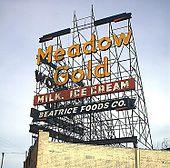
What was ultimately to become Tulsa was originally part of Indian Territory and was first settled by the Lochapoka and Creek tribes in 1836. They established a home under a large oak tree at the present day intersection of Cheyenne Avenue and 18th Street, and named their new settlement "Tallasi", meaning "old town" in the Creek language, which later became "Tulsa". On January 18, 1898, Tulsa was officially incorporated and elected its first mayor, Edward Calkins.
When Tulsa was a small town near the banks of the Arkansas River in 1901, Tulsa's first oil well, named Sue Bland No. 1, was established that year. By 1905, the discovery of the large Glenn Pool (located approximately 15 miles south of downtown Tulsa and site of the present day town of Glenpool) prompted a rush of entrepreneurs to the area's growing number of oil fields; Tulsa's population swelled to over 140,000 between 1901 and 1930. By 1909, seven years after the discovery of oil in the area, Tulsa's population had sprouted to 18,000. Known as the "Oil Capital of the World" for most of the 20th century, the city's success in the energy industry prompted construction booms in the popular Art Deco style of the time. Profits from the oil industry continued through the Great Depression, helping the city's economy fare better than most in the United States during the 1930s.
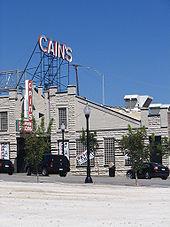
In the early 20th century, Tulsa was home to the "Black Wall Street", one of the most prosperous African American communities in the United States at the time. Located in the Greenwood neighborhood, it was the site of the Tulsa Race Riot, one of the nation's worst acts of racial violence and civil disorder. Sixteen hours of rioting on May 31 and June 1, 1921, was only ended when National Guardsmen were brought in by the Governor. An official report later claimed that 23 black and 16 white citizens were killed, but other estimates suggest as many as 300, mostly black people, died. Over 800 people were admitted to local hospitals with injuries, and an estimated 10,000 people were left homeless as 35 city blocks composed of 1,256 residences were destroyed by fire. Property damage was estimated at $1.8 million. Efforts to obtain reparations for survivors of the violence have been unsuccessful.
In 1925, Tulsa businessman Cyrus Avery, known as the "Father of Route 66," began his campaign to create a road linking Chicago to California by establishing the U.S. Highway 66 Association in Tulsa, earning the city the nickname the "Birthplace of Route 66". Once completed, U.S. Route 66 took an important role in Tulsa's development as the city served as a popular rest stop for travelers, who were greeted by Route 66 icons such as the Meadow Gold Sign and the Blue Whale of Catoosa. During this period, Bob Wills and his group The Texas Playboys began their long performing stint at a small ballroom in downtown Tulsa. In 1935, Cain's Ballroom became the base for the group, which is largely credited for creating Western Swing music. The venue continued to attract famous musicians through its history, and is still in operation today. For the remainder of the mid-20th century, a master plan called for the construction of parks, churches, museums, rose gardens, improved infrastructure, and increased national advertising. The Spavinaw Dam, built during this era to accommodate the city's water needs, was considered one of the largest public works projects of the era. In the 1950s, Time magazine dubbed Tulsa "America's Most Beautiful City."
A national recession greatly affected the city's economy in 1982, as areas of Texas and Oklahoma heavily dependent on oil witnessed a freefall in gas prices and a mass exodus of oil industries. Tulsa, heavily dependent on the oil industry, was one of the hardest hit cities by the fall of oil prices. By 1992, the state's economy had fully recovered, but leaders would attempt to expand into sectors unrelated to oil and energy.
In 2003, the "Vision 2025" program was approved by voters with the purpose of enhancing and revitalizing Tulsa's infrastructure and tourism industry. The keystone project of the initiative, the BOK Center, was designed to be a home for the city's minor league hockey and arena football teams, as well as a venue for major concerts and conventions. The multi-purpose arena, designed by famed architect Cesar Pelli, broke ground in 2005 and was opened on August 30, 2008.


Tulsa is located in the northeastern corner of Oklahoma, 99 miles (159 km) northeast of Oklahoma City; situated between the edge of the Great Plains and the foot of the Ozarks in a generally forested region of rolling hills. The city touches the eastern extent of the Cross Timbers, an ecoregion of forest and prairie transitioning from the drier plains of the west to the wetter forests of the east. With a wetter climate than points westward, Tulsa serves as a gateway to "Green Country", a popular and official designation for northeast Oklahoma that stems from the region's green vegetation and relatively large number of hills and lakes compared to central and western areas of Oklahoma, which lie largely in the drier Great Plains region of the Central United States. Located near the western edge of the U.S. Interior Highlands, northeastern Oklahoma is the most topographically diverse part of the state, containing seven of Oklahoma's 11 eco-regions and more than half of its state parks. The region encompasses 30 lakes or reservoirs and borders the neighboring states of Kansas, Missouri, and Arkansas. The geographic coordinates of the city of Tulsa are 36 °7 a²53 a³N 95 °56 a²14 a³W / 36.13139 °N 95.93722 °W / 36.13139; -95.93722 (36.131294, -95.937332), with an elevation of 700 feet (210 m) above sea level.
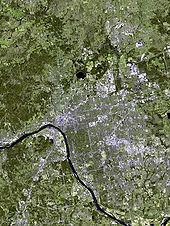
The city is split by the prominent Arkansas River, which flows in a wide, sandy-bottomed channel. Its flow through the Tulsa area is controlled by upstream flood control reservoirs, but its width and depth can vary widely throughout the year, such as during periods of high rainfall or severe drought. However, a low-water dam maintains a full channel at all times in the area adjacent to downtown Tulsa. This portion of the river is known as Zink Lake. Heavily wooded and with abundant parks and water areas, the city holds several prominent hills with names such as "Shadow Mountain" and "Turkey Mountain", which create varied terrain, especially in its southern portions. While its central and northern sections are generally flat to gently undulating, the Osage Hills extension into the northwestern part of the city further varies the landscape. Holmes Peak, in the northwest corner of the city, is the tallest point in five counties at 1030 ft (314 m). According to the United States Census Bureau, the city has a total area of 186.8 square miles (484 km2), of which 182.6 square miles (473 km2) of it is land and 4.2 square miles (11 km2) of it (2.24%) is water.
Tulsa is situated near the heart of Tornado Alley and has a temperate climate of the subtropical variety with a yearly average temperature of 60.8 °F (16.0 °C) and an average precipitation of 42.4 inches (1,080 mm) As is typical of temperate zones, weather patterns vary by season with occasional extremes in temperature and rainfall. The highest temperature recorded in Tulsa was 115 °F (46 °C) on August 10, 1936.
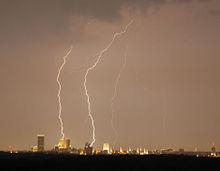
Primarily in the spring and early summer months, the city is subjected to severe thunderstorms containing large hail, damaging winds, and, occasionally, tornadoes, providing the area with a disproportionate share of its annual rainfall. Severe weather is not limited to this season, however. For instance, on December 5, 1975, and on December 24, 1982, Tulsa experienced tornadoes. Due to its potential for major flooding events, the city has developed one of the most extensive flood control systems in the nation. A comprehensive flood management plan was developed in 1984 following a severe flood caused by a stalled weather front that dropped 15 inches (380 mm) of rain overnight, killing 14, injuring 288, and destroying 7,000 buildings totaling $180 million in damage. In the early 1990s and again in 2000, the Federal Emergency Management Agency honored Tulsa as leading the nation in flood plain management.
Triple digit temperatures (>=38 °C) are observed on average 11 days per annum, sometimes exceeding 105 °F (41 °C) from July to early September, usually accompanied by high humidity brought in by southerly winds. Lack of air circulation due to heat and humidity during the summer months leads to higher concentrations of ozone, prompting the city to release "Ozone Alerts", encouraging all parties to do their part in complying with the Clean Air Act and United States Environmental Protection Agency standards. The autumn season is usually short, consisting of pleasant, sunny days followed by cool nights. Winter temperatures, while generally mild, occasionally experience extremes below 0 °F ( na18 °C) while annual snowfall averages about 9.1 inches (23 cm).

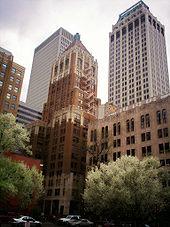
A building boom in the early 20th century gave Tulsa one of the largest concentrations of art deco architecture in the United States. Most commonly in the zigzag and streamline styles, the city's art deco is dotted throughout its older neighborhoods, primarily in downtown and midtown. A collection of large art deco structures such as the Mid-Continent Tower, the Boston Avenue Methodist Church, and the Philtower, have attracted events promoting preservation and architectural interest. In 2001, Tulsa served as the host city for the International Art Deco Congress, a semiannual event designed to promote art deco architecture internationally. Building booms in the 1970s and '80s gave the city a larger base of contemporary architectural styles. The BOK Tower, built during this period, is the 2nd tallest building in Oklahoma and the surrounding states of Missouri, New Mexico, Arkansas, and Kansas. Tulsa also has the second-, third-, and fourth-tallest buildings in the state, including the Cityplex Tower, which is located in South Tulsa across from Oral Roberts University, far from downtown. One of the area's unique architectural complexes, Oral Roberts University, is built in a Post-Modern Futuristic style, incorporating bright gold structures with sharp, jetting edges and clear geometric shapes. The BOK Center, Tulsa's new arena, incorporates many of the city's most prominent themes, including Native American, art deco, and contemporary architectural styles. Intended to be an architectural icon, the building was designed by Cesar Pelli, the architect of the Petronas Towers in Malaysia.
Downtown Tulsa is an area of approximately 1.4 square miles (3.6 km2) surrounded by an inner-dispersal loop created by Interstate 244, Highway 64, and Highway 75. The area serves as Tulsa's financial and business district, and is the focus of a large initiative to draw tourism, which includes plans to capitalize on the area's historic architecture. Much of Tulsa's convention space is located in downtown, such as the Tulsa Performing Arts Center and the Tulsa Convention Center, and the BOK Center. Prominent downtown sub-districts include the Blue Dome District, the Brady Arts district, and the Greenwood Historical District, Owen Park Historical Neighborhood, the site of ONEOK Field, a baseball stadium for the Tulsa Drillers opened in 2010.
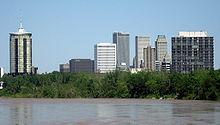
The city's historical residential core lies in an area known as Midtown, containing upscale neighborhoods built in the early 20th century with architecture ranging from art deco to Greek Revival. The University of Tulsa, the Swan Lake neighborhood, Philbrook Museum, and the upscale shopping districts of Utica Square, Cherry Street, and Brookside are located in this region. A large portion of the city's southern half has developed since the 1970s, containing low density housing and retail developments. This region, marked by secluded homes and suburban neighborhoods, contains one of the state's largest shopping malls, Woodland Hills Mall, as well as Southern Hills Country Club, and Oral Roberts University. East of Highway 169 and north of 61st street, a diverse racial makeup marks the eastern portions of the city, with large Asian and Mexican communities and much of the city's manufacturing industry.
Areas of Tulsa west of the Arkansas River are called West Tulsa, and are marked by large parks, wilderness reserves, and large oil refineries. The northern tier of the city is home to OSU-Tulsa, Gilcrease Museum, Tulsa International Airport, the Tulsa Zoo, the Tulsa Air and Space Museum, and the nation's third-largest municipal park, Mohawk Park.
A 2011 study by Walk Score ranked Tulsa 32nd most walkable of fifty largest U.S. cities.
(Downtown Tulsa)
According to the 2010 census, Tulsa a population of 391,906 and the racial and ethnic composition was as follows:
As of the 2010 census, there were 391,906 people, 163,975 households, and 95,246 families residing in the city, with a population density of 1,991.9 inhabitants per square mile (769.1 /km2). There were 185,127 housing units at an average density of 982.3 per square mile (379.2/km2). Of 163,975 households, 27% had children under the age of 18 living with them, 38.2% were married couples living together, 14.6% had a female householder with no husband present, and 41.9% were non-families. Of all households, 34.5% are made up of only one person, and 10% had someone living alone who was 65 years of age or older. The average household size was 2.34 people and the average family size was 3.04.
In the city proper, the age distribution was 24.8% of the population under the age of 18, 10.9% from 18 to 24, 29.9% from 25 to 44, 21.5% from 45 to 64, and 12.9% who were 65 years of age or older, while the median age was 34 years. For every 100 females there were 93.5 males, while for every 100 females over the age of 17 there were 90.4 males. The median income for a household in the city was $39,289, and the median income for a family was $50,464. The per capita income for the city was $26,069. About 10.9% of families and 19.3% of the population were below the poverty line, including 20.5% of those under age 18 and 8.1% of those age 65 or over.
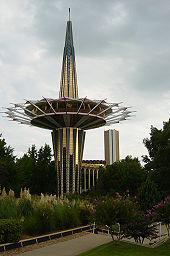
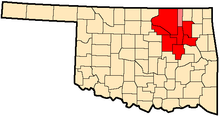
The Tulsa Metropolitan Area, or the region immediately surrounding Tulsa with strong social and economic ties to the city, occupies a large portion of the state's northeastern quadrant. It is informally known as "Green Country", a name derived from the state's official tourism designation for all of northeastern Oklahoma, though its usage in relation to the Tulsa Metropolitan Area can be traced to the early part of the 20th century.
The Census Bureau defines the sphere of the city's influence as the Tulsa Metropolitan Statistical Area (MSA), spanning seven counties: Tulsa, Rogers, Osage, Wagoner, Okmulgee, Pawnee, and Creek. The 2009 U.S. Census estimate shows the Tulsa MSA to have 929,015 residents The Tulsa-Bartlesville Combined Statistical Area (CSA) is created by adding the nearby Bartlesville, Oklahoma, micropolitan area, consisting of Washington County in Northeastern Oklahoma. In 2011, U.S. Census Estimates show the Tulsa-Bartlesville CMSA to have 998,438 residents. And is expected to have already surpassed one million residence in late 2012.
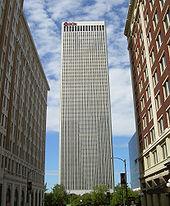
Though the oil industry has historically dominated Tulsa's economy, efforts in economic diversification have created a base in the sectors of aerospace, finance, technology, telecommunications, high tech, and manufacturing. The Tulsa International Airport (TUL) and the Tulsa Port of Catoosa, the nation's most inland seaport, connect the region with international trade and transportation. An American Airlines maintenance base at Tulsa International Airport is the city's largest employer and the largest maintenance facility in the world, serving as the airline's global maintenance and engineering headquarters, while the Tulsa Port of Catoosa and the Tulsa International Airport house extensive industrial parks.
Products from Tulsa manufacturers account for about 60% of Oklahoma's exports, and in 2001, the city's total gross product was in the top one-third of metropolitan areas, states, and countries, with more than $29 billion in total goods, growing at a rate of $250 million each year. In 2006, Forbes magazine rated Tulsa as second in the nation in income growth, and one of the best cities in the country to do business with. Usually among the lowest in the nation in terms of cost of doing business, the Tulsa Metropolitan Area in 2005 was rated among the five lowest metropolitan areas in the United States for that category.
A number of large financial corporations are headquartered in Tulsa, the largest being the BOK Financial Corporation. The semi-national convenience store chain QuikTrip, the international car rental company of Dollar Thrifty Automotive Group, Hilti, and Mazzio's semi-national pizza chain also call Tulsa home. Many international oil and gas-related companies have headquarters in Tulsa, including Williams Companies, SemGroup, Syntroleum, ONEOK, Samson and Excel Energy. Meanwhile, there are 30 companies in Tulsa that employ more than 1,000 people, though small businesses make up more than 80% of the city's companies.
During a national recession from 2001 to 2003, the city lost 28,000 jobs. In response, a development initiative, Vision 2025, promised to incite economic growth and recreate lost jobs. Projects spurred by the initiative promised urban revitalization, infrastructure improvement, tourism development, riverfront retail development, and further diversification of the economy. As of 2007, employment levels have surpassed pre-recession heights and the city is in a significant economic development and investment surge. This economic improvement is also seen in Tulsa aos housing trends which show an average of a 6% increase in rent in 2010.
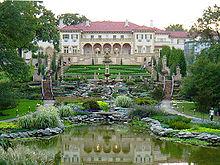
Though Oklahoma is placed entirely in the Southern United States by the United States Census Bureau, Tulsa is influenced by the nearby Southwest, Midwest, and Southern cultural regions, as well as a historical native American presence. These influences are expressed in the city's museums, cultural centers, performing arts venues, ethnic festivals, park systems, zoos, wildlife preserves, and large and growing collections of public sculptures, monuments, and artwork.
Located in the former estate of oil pioneer Waite Phillips, Philbrook Museum is considered one of the top 50 fine art museums in the United States, and is one of only five to offer a combination of a historic home, formal gardens, and an art collection. The collections of Thomas Gilcrease are housed at the Gilcrease Museum, which also holds the world's largest, most comprehensive collection of art and artifacts of the American West. With remnants of the Holocaust and artifacts relevant to Judaism in Oklahoma, the Sherwin Miller Museum of Jewish Art preserves the largest collection of Judaica in the Southwest United States. Other museums, such as the Tulsa Historical Society, the Tulsa Air and Space Museum, the Oklahoma Jazz Hall of Fame, and the Tulsa Geosciences Center, document histories of the region, while the Greenwood Cultural Center preserves the culture of the city's African American heritage, housing a collection of artifacts and photography that document the history of the Black Wall Street prior to the Tulsa Race Riot of 1921.
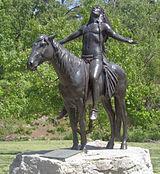
Since 1969, public displays of artwork in Tulsa have been funded by one percent of its annual city budget. Each year, a sculpture from a local artist is installed along the Arkansas River trail system, while other sculptures stand at local parks, such as an enlarged version of Cyrus Dallin's Appeal to the Great Spirit sculpture at Woodward Park. At the entrance to Oral Roberts University stands a large statue of praying hands, which, at 60 feet (18 m) high, is the largest bronze sculpture in the world. As a testament to the city's oil heritage, the 76-foot (23 m) Golden Driller guards the front entrance to the Tulsa County Fairgrounds.
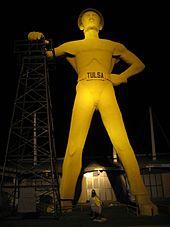
Tulsa contains several permanent dance, theater, and concert groups, including the Tulsa Ballet, the Tulsa Opera, the Tulsa Symphony Orchestra, Light Opera Oklahoma, Signature Symphony at TCC, the Heller Theatre, American Theatre Company, which is a member of the Theatre Communications Group and Oklahoma's oldest resident professional theatre, and Theatre Tulsa, the oldest continuously operating community theatre company west of the Mississippi River. Tulsa also houses the Tulsa Spotlight Theater, which shows the longest-running play in America (The Drunkard) every Saturday night. Large performing arts complexes include the Tulsa Convention Center, the Tulsa Performing Arts Center, Expo Square Pavilion, the Mabee Center, the Tulsa Performing Arts Center for Education, and the River Parks Amphitheater and Tulsa's largest venue, the BOK Center. Ten miles west of the city, an outdoor amphitheater called "Discoveryland!" holds the official title of the world performance headquarters for the musical Oklahoma!, while Cain's Ballroom, considered the birthplace of Western Swing, housed the performance headquarters of Bob Wills and the Texas Playboys during the 1930s. The centerpiece of the downtown Brady Arts District, the Brady Theater, is the largest of the city's five operating performing arts venues that are listed on the National Register of Historic Places. The city's film community hosts annual festivals such as the Tulsa United Film Festival and Tulsa Overground Film and Music Festival.
The City of Tulsa manages 135 parks spread over 6,000 acres (2,400 ha). Woodward Park, a 45-acre (18 ha) tract located in midtown Tulsa, doubles as a botanical gardens featuring the Tulsa Municipal Rose Garden, with more than 6,000 rose plants in 250 varieties, and the Linnaeus Teaching Gardens, which demonstrate the latest and most successful techniques for growing vegetables, annuals, perennials, woody plants and groundcovers. Tulsa River Parks is a series of linear parks that run adjacent to the Arkansas River for about 10 miles (16 km) from downtown to the Jenks bridge. Since 2007 a significant portion of the River Parks area has been renovated with new trails, landscaping and playground equipment. The River Parks Turkey Mountain Urban Wilderness Area on the west side of the Arkansas River in south Tulsa is a 300-acre area that contains over 45 miles of dirt trails available for hiking, trail running, mountain biking and horseback riding.
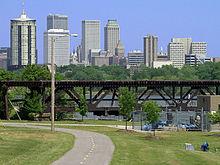
The city's zoo, the Tulsa Zoo and Living Museum, was voted "America's Favorite Zoo" in 2005 by Microsoft Game Studios in connection with a national promotion of its Zoo Tycoon 2 computer game. Doubling as a museum that documents the cultures and history of various climates in North America, the zoo encompasses a total of 78 acres (32 ha) with approximately 1,500 animals and 436 species. The zoo is located in 2,820-acre (1,140 ha) Mohawk Park (the third largest municipal park in the United States) which also contains the 745-acre (301 ha) Oxley Nature Center.
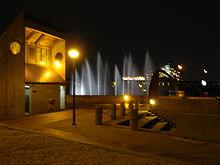
On the west bank of the Arkansas River in the suburb of Jenks, the Oklahoma Aquarium is the state's only freestanding aquarium, containing over 200 exhibits, including a shark tank.
The Tulsa State Fair, operating in late September and early October, attracts over one million people during its 10 day run, and the city's Oktoberfest celebration was named one of the top 10 in the world by USA Today and one of the top German food festivals in the nation by Bon Appetit magazine. A number of other cultural heritage festivals are held in the city throughout the year, including the Intertribal Indian Club Powwow of Champions in August; Scotstfest, India Fest, Greek Festival, and Festival Viva Mexico in September; ShalomFest in October; Dia de Los Muertos Art Festival in November; and the Asian-American Festival in May. The annual Mayfest arts and crafts festival held downtown was estimated to have drawn more than 365,000 people in its four day run in 2012. On a smaller scale, the city hosts block parties during a city-wide "Block Party Day" each year, with festivals varying in size throughout city neighborhoods. Tulsa has one major amusement park attraction, Big Splash Water Park, featuring multi-story water slides and large wave pools. Until 2006, the city also hosted Bell's Amusement Park, which closed after Tulsa County officials declined to renew its lease agreement.[100]
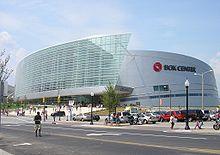
Tulsa supports a wide array of sports at the professional and collegiate levels. Currently, the city hosts one team in first-tier professional leagues, the Tulsa Shock of the WNBA; two NCAA Division I colleges; and four professional, minor league sports teams, playing in basketball, baseball, hockey, and soccer.[101] The city also contains one of the nation's top rated golf courses, Southern Hills Country Club, which is one of two courses that have hosted seven men's major championships: three U.S. Opens and four PGA Championships, the most recent in 2007.[102] The course has held five amateur championships[102] and from 2001 to 2008 the LPGA had a regular tour stop, most recently known as the SemGroup Championship at Cedar Ridge Country Club.[103] The 18,000-seat BOK Center is the centerpiece of the Vision 2025 projects and was completed in August 2008. The BOK Center was in the top ten among indoor arenas worldwide in ticket sales for the first quarter of 2009. It is the home for the city's WNBA, arena football, and hockey teams.[104] From 1978 to 1984, the city hosted the Tulsa Roughnecks, who played in the now-defunct North American Soccer League and won that league's championship in 1983. Also in 1984, the city hosted the Oklahoma Outlaws of the now-defunct United States Football League for a single season.[105]
Tulsa has two universities that compete at the NCAA Division I level: the University of Tulsa Golden Hurricane, and the Oral Roberts University Golden Eagles. The University of Tulsa's men's basketball program has reached the Sweet Sixteen three times, made an appearance in the Elite Eight in 2000, won the NIT championship in 1981 and 2001, and won the inaugural College Basketball Invitational in 2008.[106][107] The Tulsa football team has played in 16 bowl games, including the Sugar Bowl (twice) and the Orange Bowl.[108] Oral Roberts University's men's basketball team reached the Elite Eight in 1974 and won the Mid-Continent Conference title three straight years, from 2005 to 2007.[109] At the secondary level, the Tulsa area is home to several high school athletic programs that are frequently ranked among the best nationally.[110]
In 2008 Tulsa funded 39.2 million to build a new ballpark in the Greenwood District near downtown for its Class AA Texas League baseball team, the Tulsa Drillers. The ground breaking was held on December 19, 2008. ONEOK bought the naming rights for 10 million for the next 25 years. The first game at ONEOK Field was held on April 8, 2010. Country music star Tim McGraw threw out the first pitch.
The city's running and cycling communities support events such as the Tulsa Tough cycling race, the Route 66 Marathon,[111] and the Tulsa Run, which features over 8000 participants annually.[112] Gambling is supported by a community of Indian gaming venues that have been allowed to expand gambling options. In 2005, compacts between the state and various tribes allowed facilities to offer table card games and slot machines.[113] Another popular gambling draw, Horse racing events are housed by the Fair Meadows Race Track and Will Rogers Downs in nearby Claremore.
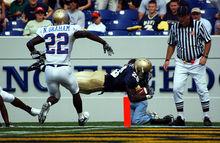
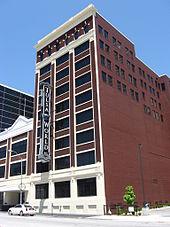
Tulsa's leading newspaper is the daily Tulsa World, the second most widely circulated newspaper in Oklahoma with a Sunday circulation of 189,789.[114] Urban Tulsa, another large publication, is a weekly newspaper covering entertainment and cultural events. Covering primarily economic events and stocks, the Tulsa Business Journal caters to Tulsa's business sector. Other publications include the Oklahoma Indian Times, the Tulsa Daily Commerce and Legal News, the Tulsa Beacon, This Land Press, and the Tulsa Free Press. Until 1992, the Tulsa Tribune served as a daily major newspaper competing with the Tulsa World. The paper was acquired by the Tulsa World that year.[115]Tulsa is also served by television and radio broadcasting networks. All major U.S. television networks are represented in Tulsa. Cable television service in the area is provided by Cox Communications. As in most major American cities, local radio stations in the Tulsa area are controlled by a small handful of large broadcasting companies. The late radio personality Paul Harvey was born in Tulsa and worked at local radio station KVOO in his early career.
Western Swing, a musical genre with roots in Country Music, was made popular at Tulsa's Cain's Ballroom. The Tulsa Sound, a variation of Rockabilly, Blues, and Rock 'n' Roll, was started and largely developed by local musicians J. J. Cale Leon Russell in the 1960s and 1970s. The Tulsa Sound heavily influenced musicians Eric Clapton and Jimmy Markham.[116] Musicians from Tulsa or that started their musical careers in Tulsa include Garth Brooks, The Gap Band, Hanson, Caroline's Spine, Ronnie Dunn, Gene Autry, David Gates, Jim Keltner, Bob Wills,[117] David Cook.[118]
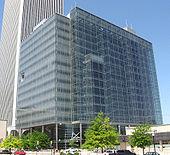
A mayor-council government has been in place in Tulsa since 1989 when the city converted from a city commission government deemed wasteful and less efficient.[119] Since the change, Tulsa mayors have been given more power in accordance with a strong mayoral system and have greater control of a more consolidated array of governmental branches.[119] Plurality voting is used to elect mayors, who serve a term in office of four years. The present mayor of Tulsa is Republican Dewey F. Bartlett, Jr. who won the 2009 election and took office on December 7, 2009.[120] Another Tulsa political figure, Jim Inhofe, who now represents Oklahoma in the United States Senate, served as the mayor of Tulsa early in his political career.[121]
A city councilor from each of the city's nine council districts is elected every two years, each serving a term of two years. Councilors are elected from their own respective districts based on a plurality voting system, and serve on the Tulsa City Council. Roscoe Turner of District Three currently serves as the council chairman along with Vice Chairman John Eagleton of District Seven. As a whole, the council acts as the legislative body of city government, which aims to pass laws, approve the city budget, and manage efficiency in city government. In accordance with the mayor-council form of government, the Tulsa City Council and the office of the Mayor coordinate in city government operations. A third body of the government, the city auditor, is elected independently of the city council and mayor to ensure that the auditor can act in an objective manner. The auditor is elected for a term of two years.[119] Phil Wood, a Democrat, held the position for 21 years before being defeated by Republican Preston Doerflinger in the 2009 election.[122] The city serves as the seat of county government for Tulsa County, and lies mostly within Oklahoma's 1st congressional district, with its far northwestern areas in southern Osage County in Oklahoma's 3rd congressional district.
Municipal and State laws are enforced in Tulsa by the Tulsa Police Department, an organization of about 770 officers as of 2006.[123] In 2004, Tulsa's crime rate was 7806.1 per 100,000 people, about 1.5 times the national average.[124] There were 58 murders, 1096 robberies, and 6,592 burglaries in 2004.[124]
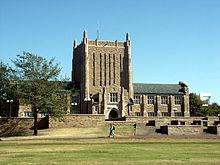
The Presbyterian Church (PCUSA) established the Presbyterian Mission Day School, a one-story building at what would become 4th Street and Boston Avenue in 1884. A second story was soon added to accommodate the number of children who were to attend. This school operated until 1889.[125] When Tulsa incorporated in 1899, it took over the school and became the first public school. James M. Hall and three other men bought the property with their own funds and held the title until the city could reimburse them.[125][126]
Tulsa built its first two public schools in 1905. Construction of more schools began accelerating in 1906. In December 1907, control of the public schools passed from the city government to the Tulsa Board of Education.[125]
Tulsa High School opened in 1906 on the same block formerly occupied by the Presbyterian mission school, which had been razed. The new school was a three-story cream colored brick building with a dome. The school was accredited by the North Central Association of Schools and Colleges in 1913. It proved too small by 1916, when Tulsa voters approved a bond issue to construct a new high school at Sixth Street and Cincinnati Avenue, which was renamed Central High School. The north half of this facility opened in 1917, while the south half opened in 1922.[127] This building remained in this service until 1976, when it was replaced by a new building on West Edison Street. The old building was taken over by the Public Service Company of Oklahoma.[125]
There are three primary public school districts in the city of Tulsa. Tulsa Public Schools, with nine high schools and over 41,000 students, is the second-largest school district in Oklahoma[128] and includes Booker T. Washington High School, a magnet school judged to be the 65th best high school in the United States by Newsweek Magazine in 2008.[129] Each with one upper high school, Jenks and Union schools are the city's two other primary districts, covering the southern portion of the city near the towns of Jenks and Broken Arrow. In 2006, there were more than 90,000 students attending Tulsa County's public schools.[130] The Catholic Diocese of Tulsa supports a system of parochial and diocesan schools, including Bishop Kelley High School. Another Catholic high school, Cascia Hall Preparatory School, is administered by Augustinians.[131] Most other private schools have religious affiliations with various Jewish and Protestant denominations, including Holland Hall School, affiliated with the Episcopal Church.
The largest library system in the Tulsa Metropolitan Area, the Tulsa City-County Library, contains over 1.7 million volumes in 25 library facilities.[132] The library is active in the community, holding events and programs at most branches, including free computer classes, children's storytimes, business and job assistance, and scholarly databases with information on a variety of topics.[130] The McFarlin Library at the University of Tulsa is a federal depository library holding over three million items.[133] Founded in 1930, the library is known for its collection of Native American works and the original works of Irish author James Joyce.[133] The Tulsa City-County Library and the University of Tulsa's Law Library are also federal depository libraries, making Tulsa the only city in Oklahoma with more than two federal depository libraries.[134]
Kendall College, a Presbyterian school, moved to Tulsa from Muskogee in 1907. This became the start of higher education in Tulsa. In 1920, the school merged with a proposed McFarlin College to become The University of Tulsa. The McFarlin library of TU was named for the principal donor of the proposed college, oilman Robert M. McFarlin.
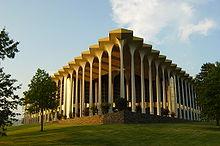
Tulsa has 15 institutions of higher education, including two private universities: the University of Tulsa, a school founded in 1894; and Oral Roberts University, a school founded by evangelist Oral Roberts in 1963. The University of Tulsa has an enrollment of 4,192 undergraduate and graduate students[135] and is ranked 83rd among national doctoral universities in U.S. News and World Report's 2009 edition of America's Best Colleges and among the best 123 Western Colleges by the Princeton Review in 2007, which also ranks it in the top ten schools nationally for quality of life, overall happiness of students, and relationship with the community.[136] Oral Roberts University, a charismatic Christian institution with an enrollment of 5,109 undergraduate and graduate students,[137] was rated in 2007 by the Princeton Review one of the 123 best in the Western United States and among the West's top 50 Master's Universities by U.S. News and World Report in 2005.[138]
Rogers State University is the Tulsa area's only public four-year university, though Tulsa Community College has a partnership allowing students to complete four-year Bachelor's degrees through OU-Tulsa, OSU-Tulsa, LU-Tulsa and NSU-Broken Arrow.[139] The largest community college in Oklahoma, Tulsa Community College (TCC) operates four campuses spread across the area as well as a conference center in Midtown.[140] Oklahoma State University houses three campuses in the city, the OSU Center for Health Sciences, the OSU College of Osteopathic Medicine, and OSU ae Tulsa, accommodating upper-level undergraduate and graduate courses. The University of Oklahoma operates what is known as the OU-Tulsa Schusterman Center, offering bachelors, master's and doctoral degree programs in conjunction with the main campus in Norman and the OU Health Sciences Center in Oklahoma City. The OU-Tulsa Schusterman Center also houses the OU School of Community Medicine, the first medical school of its kind in the nation. Tulsa also has a Tulsa branch of Langston University, the only HBCU in the state, founded in 1897. The Spartan School of Aeronautics enrolls 1,500 students at its flight programs near Tulsa International Airport[141] and the city's vocational education is headed by Tulsa Technology Center, the oldest and largest vocational technology institution in the state.[142] Virginia College is a school focusing on career training in Business and office, Health and Medical and Network Engineering and has a campus in Tulsa. The college offers day and night classes, several of which are available online.[143]
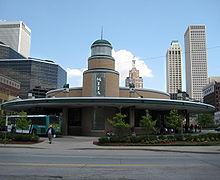
Transportation in Tulsa is aided by Tulsa Transit's bus network of 97 vehicles[144] and two primary airports, while the Tulsa Port of Catoosa provides transportation of goods and industry through international trade routes. Though internal transportation is largely dependent on automobiles, the city is consistently ranked in the five lowest metropolitan areas for average price of gas at the pump.[145] As reported by the Oklahoma Department of Transportation in 2005, Tulsa's busiest freeway is U.S. 169 with about 106,000 vehicles daily between 51st and 61st Streets, and its second busiest freeway is Interstate 44 with about 88,000 vehicles between Yale and Sheridan Avenues.[146] Currently, there are no mass transit rail lines in Tulsa, though the prospect of passenger rail lines from downtown Tulsa to the suburb of Broken Arrow is currently being studied.[147] Freight railways bisect the city in every direction, and include BNSF, UP, SK&O, and OSRR rail lines.
The Tulsa International Airport, home to ten commercial airlines, seven cargo carriers, and several charter airlines, serves more than three million travelers annually with almost 80 departures every day, contributing nearly $3.2 billion to the economy. In 2007, the airport completed most of an expansion project, which included larger terminal sizes and the addition of restaurants and shops. Riverside-Jones airport, a general aviation airport in West Tulsa, saw 335,826 takeoffs and landings in 2008, making it the busiest airport in Oklahoma and fifth busiest general aviation airport in the nation.[148] Its operations contribute over $3.2 million to the economy annually.[148] At the head of the McClellan-Kerr Arkansas River Navigation System, the Tulsa Port of Catoosa is the most inland ocean-going port in the United States[149] and connects barge traffic from Tulsa to the Mississippi River via the Verdigris and Arkansas rivers. The port is one of the largest in the United States and contributes to one of the busiest waterways in the world via its course to the Gulf of Mexico.[150] Long distance passenger rail transportation serves Tulsa only through Greyhound bus lines, which provides bus connections to nearby cities with Amtrak stations.[151]
The Saint Francis Health System owns several hospitals with a central location at Saint Francis Hospital in the southern part of the city. The facility contains 700 doctors and 918 beds,[152] and with more than 7,000 employees, the network is the second largest healthcare employer in the state.[153] The health system also operates a heart hospital, which was named by General Electric in 2004 one of the most advanced heart hospitals in the nation.[154] St. John Medical Center, located in an 11-story midtown center, employs nearly 700 doctors.[155] Other networks, such as Hillcrest Health System, operate a number of facilities in varying sizes.[156] Beginning in 2007, the city elected to renew a five-year contract with EMSA for ambulance service after a period of consideration to switch to the Tulsa Fire Department for providing such services.[157]
In accordance with the Tulsa Global Alliance, which operates in conjunction with Sister Cities International, an organization that began under President Dwight Eisenhower in 1956, Tulsa has been given eight international sister cities in an attempt to foster cross-cultural understanding:[158]

Word Count: 7733






